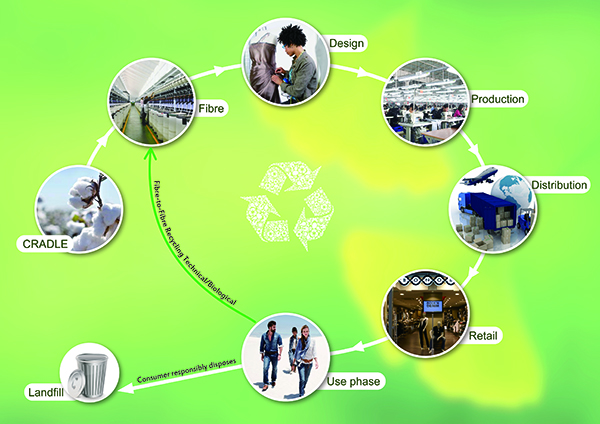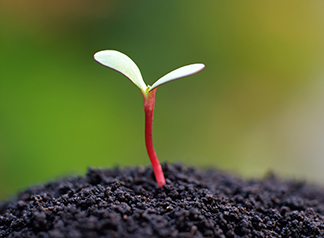Organic Cotton
Cotton’s exact age is unknown. Scientists have found pieces of cotton cloth in caves in Mexico that are at least 7000 years old. It is one of the most popular fabrics in the world but it has traditionally been grown with mass use of pesticides, chemicals and water. The chemicals used in conventional cotton production are some of the most harmful known to man. Every year new chemicals are created to spray cotton crops as the cotton plant and insects that invade it, grow immune to the current chemicals used.
Cotton is now being grown in certified organic fields and in many cases it is processed in a manner to reduce environmental damage.
Organic cotton still requires a great deal of water to grow. Due to the limited production and high expense of organic cotton fibre, it is often blended with conventional cotton. Turkey and USA are the largest producers of organic cotton, however, it still only accounts for .03% of the world total cotton production.
Cotton is a popular textile due to its natural wicking properties and absorption of dye color - although it fades over time. Cotton is a moderate strength cellulose fibre.
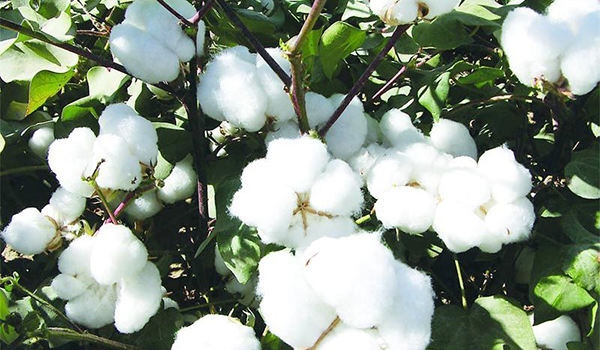
Hemp
Hemp is a cellulose fiber first used by the Chinese over 5000 years ago that has only recently gained new popularity in North America. The great Renaissance painters first painted on hemp – canvas actually comes from the word “cannibis”.
Hemp has played a very important role in American history as well. In the early 1600’s hemp was considered such a vital resource that laws were passed ordering farmers to grow it. Before 1850, all ships were rigged with hemp because of its high resistance to rot and mildew. Colonial taxes were often paid in hemp bales and soldier’s uniforms were made of hemp cloth.
As opposed to cotton, hemp is one of the most environmentally friendly fibers in the world, requiring no pesticides, herbicides or fertilizers and very little water. Almost half of the agricultural chemicals used on U. S. crops are applied to cotton.
Hemp is considered a high-yield crop and produces significantly more fiber per square foot that either cotton or flax. Hemp’s life cycle is only one hundred days and hemp cultivation for pulp and paper could stop the destruction and devastation of our forests.
Hemp exhibits eight times the strength of cotton and fabrics made from hemp are more insulating, absorbent, and more durable than cotton. It is also hyper-allergenic and non-irritating to the skin.
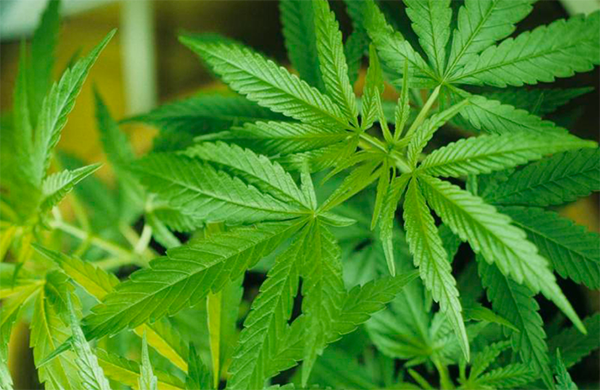
Linen
Linen is one of the strongest of the vegetable fibers and has 2 to 3 times the strength of cotton. Not only is the linen fiber strong, it is smooth, making the finished fabric lint free. It grows softer over time and finer the more it is washed.
Linen is from the flax plant and is a bast fiber- taken from the stalk. The luster is from its natural wax content.
This fiber can be easily dyed and the color does not fade when washed. Linen does wrinkle easily but also presses easily. Highly absorbent and a good conductor of heat, this fabric is cool in garments. However, constant creasing in the same place in sharp folds will tend to break the linen threads. Linen has poor elasticity and does not spring back readily.

Bamboo
Bamboo is a fast growing plant with shoots averaging 24 to 36 inches or more in a 24-hour period. When bamboo shoots emerge from the ground in the spring they reach full size in just a few months.
Bamboo is processed with little or no environmental damage and its long fibers are extremely strong. It has a natural ability to breath and wick moisture away due to its porous nature and, since it is a cellulose fiber, it can biodegrade in normal soil conditions. It actually keeps the wearer cooler by one to two degrees than someone cotton. Bamboo is also naturally anti-bacterial and resistant to mould. Even after multiple washings, over 70% of bacteria cultured on bamboo textiles are destroyed by the fibre.
The process of making bamboo is ecologically friendly and does not require any chemicals. Bamboo decomposition does not produce any pollution.

Soy
Although it is touted as one of the most recent offerings in eco-fibers, Henry Ford was photographed in the first known soy fibre suit in 1940. Since that time, soy has mostly disappeared until consumers began demanding most eco friendly products
It is a natural by-product of normal food production and is a renewable resource. The fibre is made from the hulls of soy beans used in food production. Soy can be grown organically and is naturally biodegradable. It requires no pesticides to grow and is often used to sow fields to replenish nutrients in the soil.
Soy has been dubbed “vegetable cashmere” due to its luxurious, soft hand. It is also extremely durable and easy care.
Soy has natural wicking properties and is generally combined with other cellulose fibers due to its rarity in the current marketplace. The fiber is so young, it is still being explored for its technical properties and benefits - including claims that soy's natural amino acids have a positive health effect on the wearer's skin.
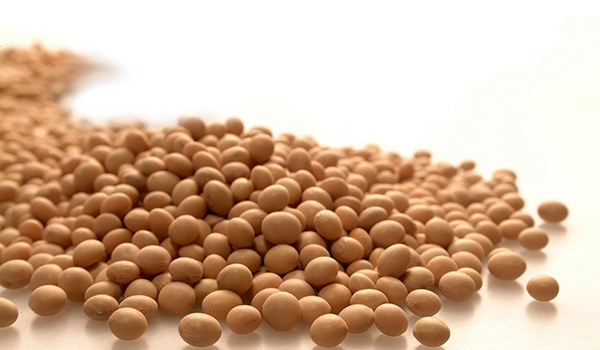
Tencel
TENCEL® is the brand name owned by Lenzing Fibers of Austria for a recently improved fabric from a fiber generically called lyocell. The name “Tencel” has gained popular acceptance but the fabrics that are popularly called “Tencel” are actually lyocell, so TENCEL® is just the brand name for a type of lyocell. According to the regulation of Lenzing Fibers, "The blend composition of a fabric must be a minimum of 30% TENCEL® to be able to use the brand name."
The raw material for lyocell is cellulose from wood pulp which is broken down chemically in a soupy sludge that is squirted out a showerhead spinneret and reformed as fibers. Cellulose is the natural polymer that makes up the living cells of all vegetation. The fiber is produced via an advanced 'closed loop' solvent spinning process, with minimal impact on the environment and economical use of energy and water. Lyocell uses an amine oxide as a non-toxic solvent which is continually recycled during the production process. Production plant emissions into the air from smokestacks and from wastewater are significantly lower in comparison to many other man-made fiber operations.
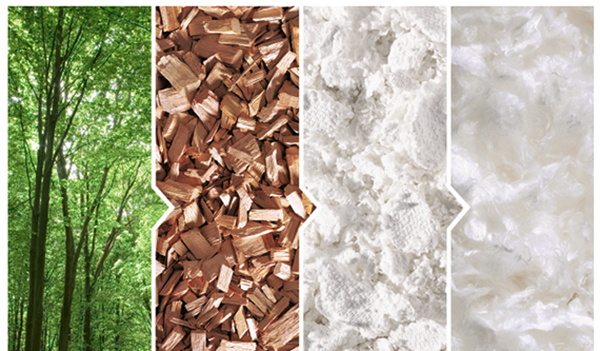
Modal
Modal is a registered trademark of Lenzing AG, an Austrian company. It acts as a second-generation viscose rayon fiber fulfilling humans eternal quest for a fiber combining both aesthetics and utility performance.
Modal is a wood pulp based cellulosic fiber, made out of pure wooden chips from the beech tree, technically as the European Schneider Zelkova tree. While viscose rayon can be obtained from the wood pulp from a number of different trees, Modal uses only beech wood. It is about 50% more hygroscopic, or water-absorbent, per unit volume than cotton is. It is designed to dye just like cotton, and is color-fast when washed in warm water.
Textiles made from Modal do not fibrillate, or pill, like cotton does, and are resistant to shrinkage and fading. They are smooth and soft, more so than even mercerized cotton, to the point where mineral deposits from hard water, such as lime, do not stick to the fabric surface. Like pure cotton, modal should ideally be ironed after washing.

Cupro
Cupro is technically a cotton, but from another part of the plant, giving the resulting fabric a significantly different hand than typical cotton.
The fiber itself is derived from cotton linter, which is the very fine, soft material that sticks to the cottonseeds and is left behind after the cotton has been ginned. Usually, these fibers are discarded, however, they are now recycled for the production of this surprisingly beautiful textile. Like tencel and modal, it is a cellulose fiber, two fabrics that are also often used in lieu of silk.
The hand of the fabric is much more luxurious than one would expect from the cotton plant- it drapes beautifully and feels similar to rayon or silk.
The fabric is breathable and regulates body temperature well. Additionally, there is no need to take this textile to the cleaners- it can be washed and dried in the machine (unlike silk!), is anti-static, and resists stretching out at high temperatures. If sensitive skin is a concern, cupro is hypoallergenic as well.
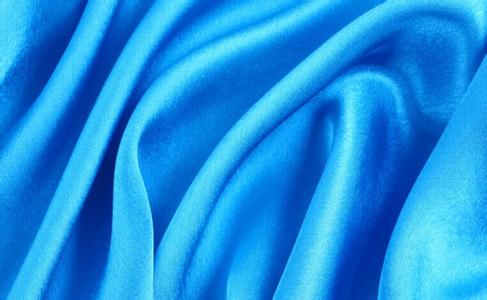
Recycled polyester
Globally Sustainable development can be achieved by following “3-R” Principle, which quotes for Reduce, Reuse and Recycle, this “3-R” principle is been achieved in the textile by the upcoming tread of Recycled Polyester (R-PET). Making PET fibers and Products from the waste and landfill PET bottles and other PET wastes is called as Recycled Polyester (R-PET).
Poly (ethylene terephthalate - or simply PET) is the most common polyester used for fiber purposes. This is the polymer used for making soft drink bottles.
Recycling PET by re-melting it and extruding it as a new fiber saves raw materials as well as reducing energy needs. Recycled Polyesters are popular because they are more fire-retardant, are easy to clean, and inexpensive. They can be blended with almost any other fiber.
One square yard of fabric contains roughly five clear, 2-liter soda bottles.
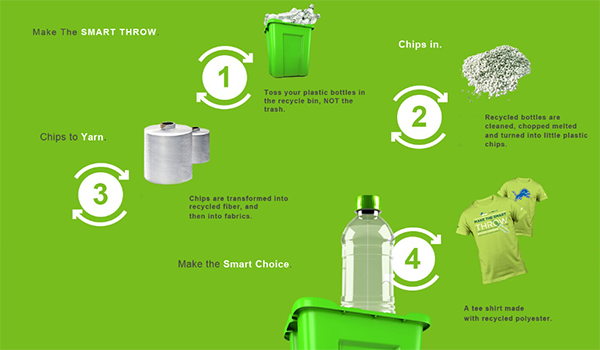
Recycled cotton
Organic Cotton Cotton’s exact age is unknown. Scientists have found pieces of cotton cloth in caves in Mexico that are at least 7000 years old. It is one of the most popular fabrics in the world but it has traditionally been grown with mass use of pesticides, chemicals and water. The chemicals used in conventional cotton production are some of the most harmful known to man. Every year new chemicals are created to spray cotton crops as the cotton plant and insects that invade it, grow immune to the current chemicals used. Cotton is now being grown in certified organic fields and in many cases it is processed in a manner to reduce environmental damage. Organic cotton still requires a great deal of water to grow. Due to the limited production and high expense of organic cotton fibre, it is often blended with conventional cotton. Turkey and USA are the largest producers of organic cotton, however, it still only accounts for .03% of the world total cotton production. Cotton is a popular textile due to its natural wicking properties and absorption of dye color - although it fades over time. Cotton is a moderate strength cellulose fibre.
